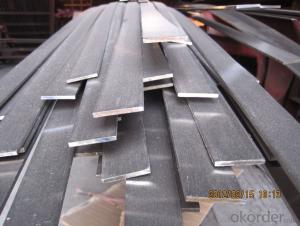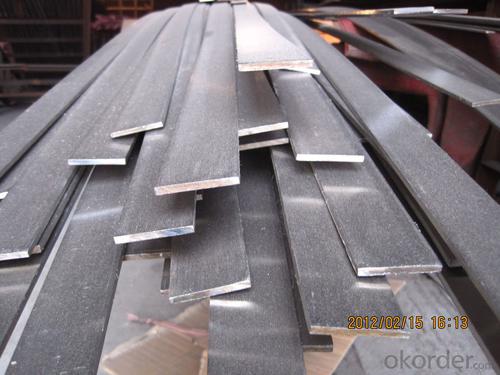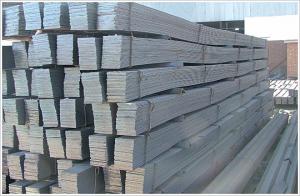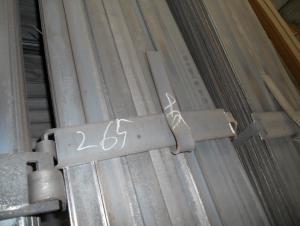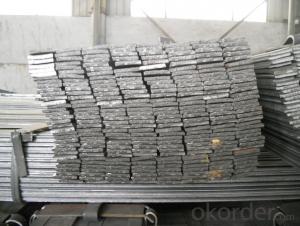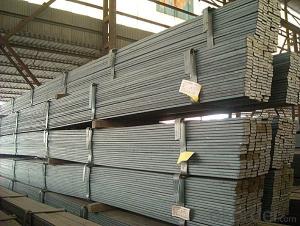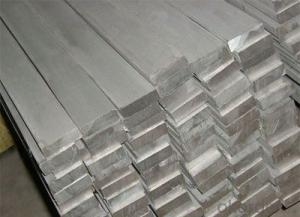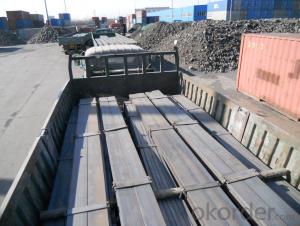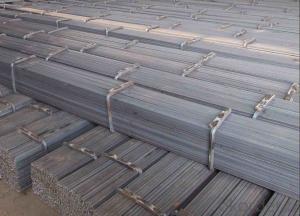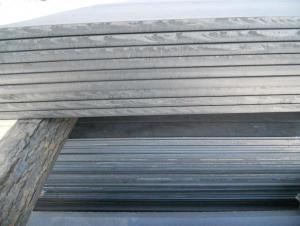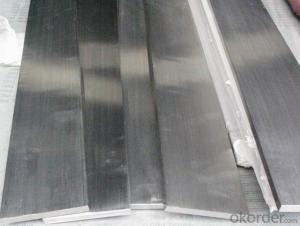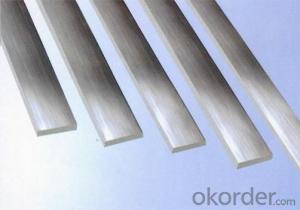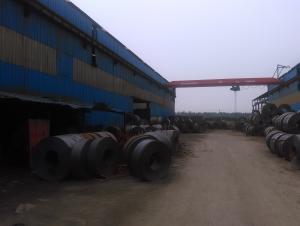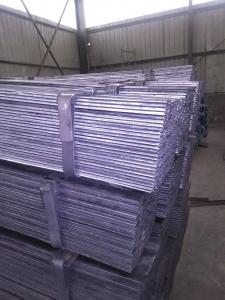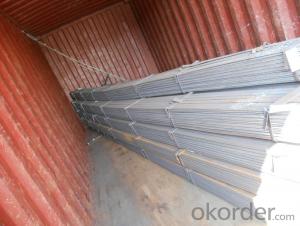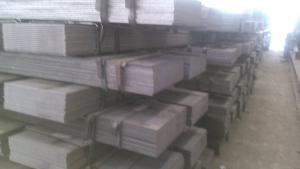FLAT BAR 20-200 HIGH QUALITY
- Loading Port:
- China Main Port
- Payment Terms:
- TT OR LC
- Min Order Qty:
- -
- Supply Capability:
- -
OKorder Service Pledge
OKorder Financial Service
You Might Also Like
Flat bar Details:
| Minimum Order Quantity: | | Unit: | m.t. | Loading Port: | |
| Supply Ability: | 10000 | Payment Terms: | | Package: | Steel Packing |
Product Description:
Product Description:
Specification of Mild Steel Flat Bar
Commodity: Mild Steel Flat Bar
Standard: GB;JIS
Material: Q195-235;SS400
Brand name: FLATSPACE
Origin place: China
Thickness: 3mm-30mm
Width:20mm-200mm
Length: Max 12m
Certification: SGS/BV
Chemical composition of Q235
Alloy No | Grade | Element(%) | ||||
C
| Mn
| S
| P
| Si
| ||
Q235
|
B
|
0.12—0.20 |
0.3—0.7 |
≤0.045 |
≤0.045
|
≤0.3
|
Physical properties of Q235
Alloy No | Grade | Yielding strength point(Mpa) | Tensile strength (Mpa) | Elongation after fracture(%) | ||||||
Thickness (mm) | Thickness (mm) | |||||||||
≤16 | >16--40 | >40--60 | >60--100 |
| ≤16 | >16--40 | >40--60 | >60--100 | ||
≥ | ≥ | |||||||||
Q235 |
B |
235 |
225 |
215 |
205 |
375--500 |
26 |
25 |
24 |
23 |
Usage/Applications of Mild Steel Flat Bar
Widely used for construction, Machinery manufacturing, Iron tower steel structure, Shipbuilding; Steel grating, Staircase, Bridge, Viaduct, Railway spare parts, Boilers making etc.
Packaging & Delivery of Mild Steel Flat Bar
Packaging Details: The Mild Steel Flat Bars are packed in bundles and loaded in 20 feet/40 feet container, or shipped by bulk cargo ,also we can do as customer's requirements.
Delivery Details:30~45 days upon the receipt of buyer payment by T.T. or L/C.
Production Flow of Mild Steel Flat Bar
The Mild steel flat bar is made through three processes:
1.Feeding the material: Feeding the row material (the steel plate) to Slitting Line.
2.Slitting:The steel plate would be slitted into expected width by lengthways cutter.
3. Leveled and cutting: The plat bar would be ground into level by the grinder and then cut into required length
- Q: How do you determine the ductility of a steel flat bar?
- The ductility of a steel flat bar can be determined by conducting a tensile test. In this test, a sample of the steel flat bar is subjected to an applied force, causing it to stretch until it eventually breaks. By measuring the elongation of the sample and calculating the percentage reduction in cross-sectional area at the point of fracture, we can determine the ductility of the steel flat bar.
- Q: How do steel flat bars perform in terms of water resistance?
- Typically, steel flat bars have low water resistance. When steel is exposed to moisture or water, it tends to rust. Inadequately treated or unprotected steel flat bars can easily corrode and deteriorate upon contact with water. Nonetheless, if a protective layer like paint or galvanized coating is applied to the steel flat bars, their water resistance can be greatly enhanced. These coatings function as barriers, preventing direct contact between water and the steel surface, thereby reducing the likelihood of rusting. Moreover, regular maintenance and appropriate storage of steel flat bars can extend their lifespan and improve their water resistance.
- Q: Can steel flat bars be used for making conveyors or material handling systems?
- Yes, steel flat bars can be used for making conveyors or material handling systems. Steel flat bars are commonly used in the construction of conveyor systems due to their strength, durability, and ability to handle heavy loads. They provide a stable and reliable base for the conveyors and are easily customizable to fit specific requirements.
- Q: How are steel flat bars measured and specified?
- Steel flat bars are typically measured and specified by their width, thickness, and length. The width refers to the measurement across the bar's broadest side, while the thickness indicates the measurement of the bar's narrowest side. The length specifies the overall size of the bar. These measurements are important for accurately determining the dimensions and specifications of steel flat bars, allowing for proper selection and use in various applications.
- Q: Can steel flat bars be heat-treated for increased hardness?
- Absolutely! Steel flat bars have the capability to undergo heat treatment for the purpose of enhancing their hardness. Heat treatment is an intricate procedure that entails heating the steel to a specific temperature and subsequently rapidly cooling it, resulting in a transformation of its microstructure and an improvement in its mechanical properties. The most commonly employed methods for increasing hardness through heat treatment are quenching and tempering. During the quenching process, the steel is heated to an elevated temperature and promptly cooled by immersing it in a quenching medium, such as oil or water. This swift cooling prompts the formation of a rigid and brittle phase known as martensite, which significantly heightens the steel's hardness. However, after the quenching stage, the steel often becomes excessively brittle and susceptible to cracking. To counteract this, it undergoes a tempering process. Tempering involves reheating the steel to a lower temperature and subsequently cooling it at a slower rate. This particular procedure mitigates the brittleness of the steel and enhances its toughness and ductility, while still maintaining a certain level of hardness. The precise parameters of the heat treatment, including the temperature and duration of heating, cooling rate, and tempering temperature, are contingent upon the composition of the steel and the desired level of hardness. It is of utmost importance to exercise meticulous control over these parameters to attain the desired hardness, while simultaneously avoiding any potential issues such as cracking or distortion. In summary, steel flat bars can indeed be subjected to heat treatment in order to augment their hardness. This process, encompassing quenching and tempering, effectively transforms the microstructure of the steel, improving its mechanical properties and rendering it suitable for a wide array of applications that necessitate high levels of hardness and strength.
- Q: What is the typical yield strength of steel flat bars?
- The typical yield strength of steel flat bars varies depending on the specific grade and type of steel being used. However, common steel grades such as A36 have a yield strength of around 36,000 psi (pounds per square inch), while higher strength steels like A572 have a yield strength of 50,000-65,000 psi.
- Q: Can steel flat bars be used for manufacturing storage racks or shelves?
- Steel flat bars are suitable for the manufacturing of storage racks or shelves. They are extensively utilized in the construction sector owing to their robustness and resilience. These bars offer a solid foundation for storage racks or shelves and can withstand heavy loads without any deformation or distortion. Furthermore, it is effortless to weld or bolt steel flat bars together, enabling the creation of customized storage solutions tailored to specific needs. Consequently, opting for steel flat bars is an outstanding decision when it comes to manufacturing storage racks or shelves.
- Q: How do steel flat bars contribute to the overall sustainability of residential projects?
- There are several ways in which steel flat bars contribute to the overall sustainability of residential projects. To begin with, steel is an incredibly durable and long-lasting material. Steel flat bars have the ability to resist corrosion, weathering, and pests, meaning that they require minimal maintenance throughout their lifespan. This durability ensures that residential structures built with steel flat bars have a longer lifespan, reducing the need for frequent repairs and replacements. As a result, this reduces waste and conserves resources. In addition, steel is one of the most recycled materials globally. At the end of their life, steel flat bars can be easily recycled, thus reducing the demand for new steel production and the associated environmental impacts. This recycling process requires less energy and emits fewer greenhouse gases compared to the production of new steel. By incorporating steel flat bars into residential projects, we are actively promoting the reuse and recycling of materials, thus contributing to the circular economy. Moreover, steel flat bars offer strength and versatility in construction. Their high strength-to-weight ratio allows for lighter structural elements, which reduces the overall weight of the building and the amount of material needed. This not only minimizes the environmental impact during the construction phase but also reduces the load on the foundation, potentially leading to energy savings over the lifespan of the building. Steel flat bars also provide design flexibility, further contributing to the sustainability of residential projects. They are available in various sizes, shapes, and finishes, allowing architects and engineers to create innovative and efficient designs. This flexibility enables the optimization of material usage, minimizing waste and maximizing resource efficiency. Lastly, steel flat bars are fire-resistant, making them a safe choice for residential construction. This fire resistance enhances the overall safety of the building and reduces the risk of fire-related damage or loss. Ultimately, this helps minimize the environmental impact associated with rebuilding or repair. Overall, incorporating steel flat bars into residential projects promotes sustainability by providing durability, recyclability, strength, design flexibility, and fire resistance. These sustainable features help reduce waste, conserve resources, and minimize the environmental footprint of the built environment.
- Q: What are the different methods of finishing the edges of steel flat bars?
- There are several methods of finishing the edges of steel flat bars, including chamfering, rounding, bevelling, and deburring. Chamfering involves cutting or grinding a beveled edge on the corners of the bar to create a smoother finish. Rounding, on the other hand, involves removing sharp edges and creating a rounded profile for improved safety and aesthetics. Bevelling is a process of cutting or grinding an angled edge along the length of the bar to create a specific angle or to prepare it for welding. Lastly, deburring involves removing any sharp or rough edges left after the manufacturing process, resulting in a cleaner and safer edge.
- Q: Can steel flat bars be used in marine applications?
- Indeed, steel flat bars have the potential to serve marine purposes. Nevertheless, it is crucial to utilize a particular variant of steel referred to as marine-grade or stainless steel for such endeavors. Conventional steel is vulnerable to corrosion and rust in the presence of saltwater or environments with elevated humidity, both of which are prevalent in marine settings. Conversely, marine-grade steel is purposefully crafted to endure the demanding circumstances of the marine milieu. It displays remarkable resistance to corrosion, rust, and pitting, rendering it ideal for incorporation in marine undertakings, including boat fabrication, ship assembly, and offshore platform construction.
Send your message to us
FLAT BAR 20-200 HIGH QUALITY
- Loading Port:
- China Main Port
- Payment Terms:
- TT OR LC
- Min Order Qty:
- -
- Supply Capability:
- -
OKorder Service Pledge
OKorder Financial Service
Similar products
Hot products
Hot Searches
Related keywords
